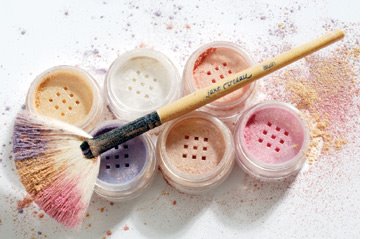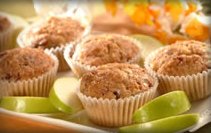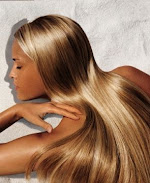The first head-to-head study reveals cranberry extract beats a common antibiotic in the treatment of urinary tract infections. Here’s what you need to know – By Colette Bouchez -  As we head into the holidays most folks are concerned with avoiding hangovers, heart burn, and maybe a cold or flu.
As we head into the holidays most folks are concerned with avoiding hangovers, heart burn, and maybe a cold or flu.
But for women – particularly those in mid life – the holidays also increase the risk of another health threat: Urinary tract infections or UTIs.
Indeed, holiday lifestyle factors like stress, lack of sleep, poor nutrition and most importantly too much alcohol and caffeine are all factors that studies show can increase a woman’s risk of UTI. For many the only way to avoid problems is to spend the entire year on low dose antibiotic therapy.
But now that prescription for urinary tract health may soon change thanks to research just published in the Journal of Antimicrobial Chemotherapy. Here researchers detail how a cranberry extract works as well – with far fewer side effects – than the antibiotic commonly prescribed to keep these annoying recurring infections at bay.
And it was the first study to make this important comparison.
"Our trial is the first to evaluate cranberry [extract] in the prevention of recurrent UTIs specifically in older women, and the first head-to-head double-blind comparison of cranberry versus antibiotic prophylaxis,” says lead researcher Marion E.T. McMurdo.
Sherry Torkos, RpH, pharmacist and author of The Benefits of Berries, observes that "McMurdo's research is a landmark study …prevention of UTI with antibiotics is effective but undesirable due to side effects such as diarrhea, upset stomach and yeast infection – and in some cases a potentially fatal super infection with the bacteria Clostridium difficile .”
In the new study researchers compared Cran-Max(r) (a proprietary cranberry concentrate found in ActiFruit(tm) cranberry chews) with trimethoprim, an antibiotic frequently prescribed for recurring UTIs in women. The randomized controlled trial took place over a period of six months and involved 137 women, each of whom had experienced two or more antibiotic-treated UTIs within 12 months.
The end result: The time between infections was no greater in the women using the cranberry extract that in those who were taking the antibiotic.
“ Trimethoprim had a very limited advantage over cranberry extract (Cran-Max) in the prevention of recurrent UTIs in older women and had more adverse effects,” says McMurdo.
These findings - though a first – may soon be duplicated as a new European study comes to a close later this month. Here the impact of Cran-Max was compared to a 480mg dose of trimethoprim-sulfamethoxazole on 560 women for a one-year period. Preliminary results appear to mimic those found in the newly published study.
Researchers theorize that cranberries work well to reduce the risk of infection by making the urinary tract more “slippery” so bacteria won’t stick to walls as easily. And that means less chance for colonization – where bacteria multiply. And if you’re wondering if simply drinking cranberry juice can help …it can, but not if it’s loaded with sugar. Indeed, since excess sugar can increase the risk of a UTI, unless you’re drinking unsweetened juice ( which is extremely bitter tasting) you’re going to eclipse the benefits.
Midlife UTI: Are You At Risk?
In most instances a UTI is caused by a bacteria that makes it's way into a woman’s urinary tract, often the result of improper bathroom hygiene (like wiping back to front.) Intimate relations can increase the risks by pushing bacteria deeper into the body.
The North American Menopause Society (NAMS) reports that women in mid-life may be particularly susceptible since a loss of estrogen shrinks the urethra, the already short tube that carries urine from the body. The shorter the urethra, the more easily bacteria can make it’s way into the urinary tract.
NAMS experts also say that as estrogen levels drop the acid level in your V zone goes turns alkaline creating an environment that favors bacteria and encourages growth, further increasing the risk of infection.
While most women experience obvious symptoms - a burning on urination, an urge to “go” all the time, even pain in the lower abdomen, this isn’t always the case. For some, a UTI may cause nothing more than fatigue – and can often be the undiagnosed culprit behind feeling tired all the time.
"Not every woman has obvious symptoms of a UTI - some have no symptoms or mild symptoms that go unnoticed, except for the fatigue," says Nicea Goldberg, MD a woman’s health specialist from NYU – Langone Medical Center in New York City.
The good news, with or without obvious symptoms a UTI is easily diagnosed via a urine sample – and once treated Goldberg says the symptoms, including the fatigue, usually clears within about a week.
If symptoms recur, you may have a chronic form of the infection, in which case the cranberry extract used in the study may help.
To learn more about the CranMax product used in this study, click here. study.
You may also be interested in reading:
Warning: Common Incontinence Treatment Found Risky
Hungry Again? It’s In Your Genes!
For more detailed health and beauty information visit www.RedDressDiary.com : The Source for Fabulous Women Over 40!
In addition to US Copyright, the text of this RedDressDiary article is licensed under a Creative Commons Attribution-ShareAlike 3.0 License. All formatting and style elements of this page are not available under this license, and Colette Bouchez retains all rights in those elements.
















































